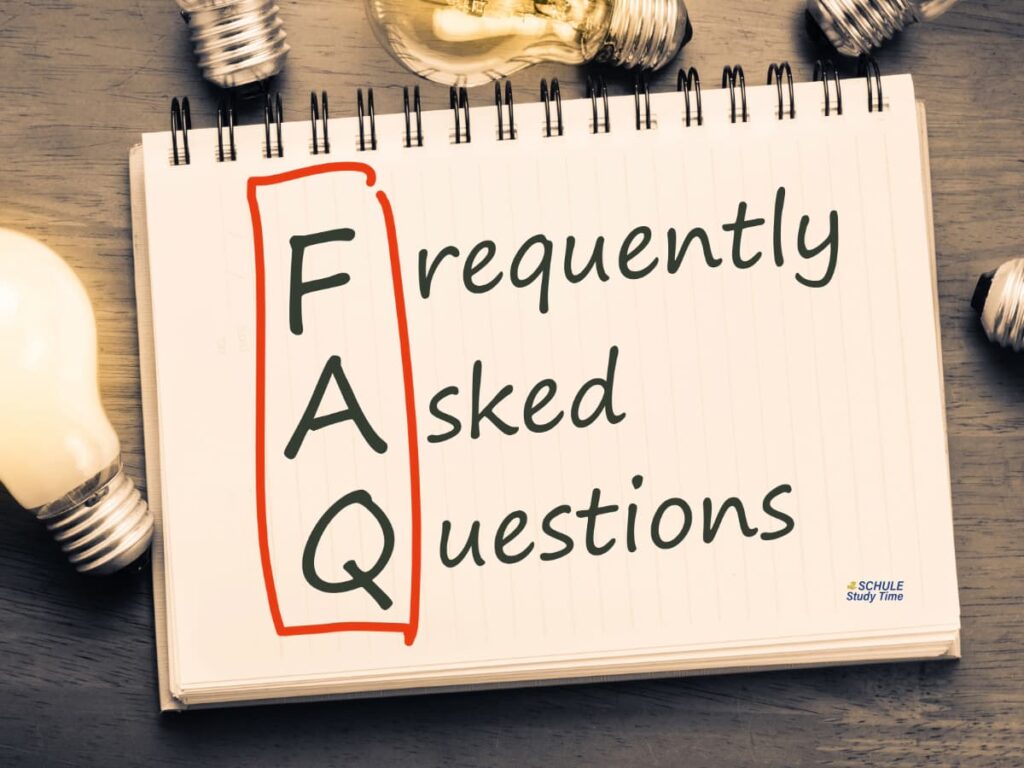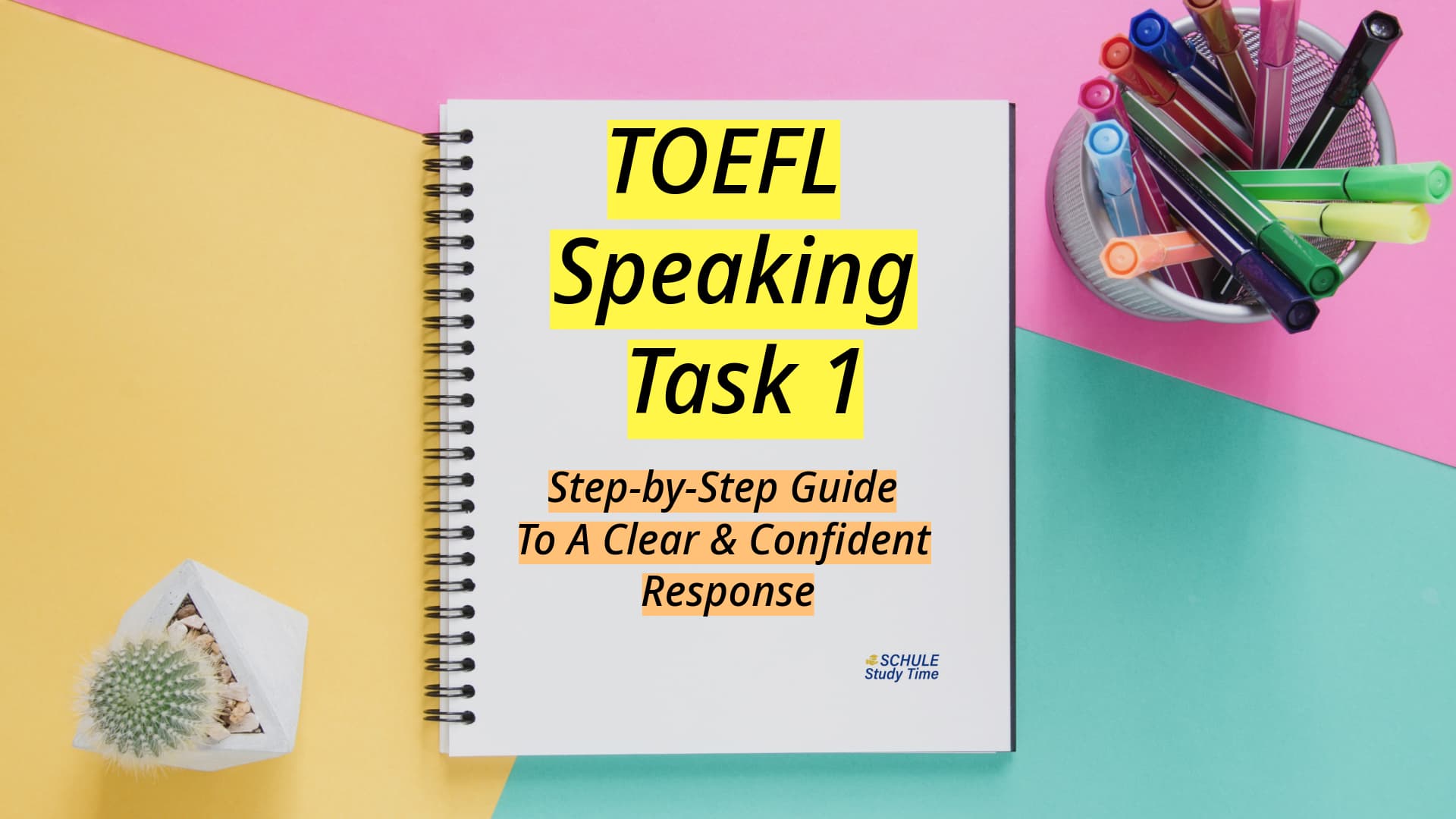TOEFL Speaking Task 1 can be one of the most challenging tasks for test-takers. This updated 2025 guide will show you step by step how to deliver a strong answer for Task 1. You’ll get a TOEFL Speaking Task 1 template, note-taking tips, self-study advice and examples of Task 1 questions and sample responses with practical tips to build your confidence and avoid common mistakes.
Why Read This Guide?
✅ Learn a high-scoring Speaking Template for TOEFL Speaking Task 1
✅ Get key transition phrases to improve fluency
✅ See example TOEFL Speaking Task 1 Questions with high-scoring responses for better understanding
✅ Discover common mistakes and how to avoid them
✅ Find practical study and note-taking tips to boost confidence and performance
Table of Contents
What Is TOEFL Speaking Task 1?
TOEFL Speaking Task 1 is an independent speaking task. It asks you to choose between two options, express a choice and explain why. You have 15 seconds of preparation time and 45 seconds to respond.
What Are The Different TOEFL Speaking Task 1 Question Types?
There are 3 types of TOEFL Speaking Task 1 questions: preference questions, agree or disagree questions and hypothetical questions. Each type is described in the table below:
| Question Type | Description | Example |
|---|---|---|
| Preference Questions | You are asked to choose between two options and justify your choice. | “Some people prefer studying in the morning, and others prefer studying at night. Which do you prefer? “ |
| Agree or Disagree Questions | Require a stance on a statement with supporting reasons. | “Do you agree that universities should require students to do community service?” |
| Hypothetical Questions (rare) | You are asked what you would do in a specific imaginary situation and why. | “If you had the chance to take a gap year before university, what would you do and why?” |
To perform well on TOEFL Speaking Task 1, you must:
- Use a clear structure: introduce your choice, give supporting details, and conclude
- Speak naturally with a steady pace and varied intonation
- Use transitions to connect ideas smoothly
The TOEFL Speaking Task 1 Template
Using a simple and flexible speaking template can help you deliver a strong answer for TOEFL Speaking Task 1. This speaking template helps you organise your ideas and show clear, logical thinking—both important for a high score in TOEFL Speaking.
The template below works well for any of the three TOEFL Speaking Task 1 question types: preference, agree/disagree, and hypothetical. This template is made up of 4 parts. Each part includes transition phrases with suggested timings to help you manage your 45-second speaking time.
Here is the template:
Part 1: Introduction (10 seconds)
Start with a clear statement of your opinion or choice:
I personally think…
Part 2: First Reason & Example (15 seconds)
Give your first reason and support it with a short, specific example:
“The first reason is that…”
“For example…”
Part 3: Second Reason & Example (15 seconds)
Present a second reason and another brief example to support your choice:
“Another reason is that…”
“For instance…”
Part 4: Conclusion (optional) (5 seconds)
Finish by restating your opinion in a short closing sentence:
“For these reasons…”
💡 Sample Task 1 responses demonstrating how to use the template are given below.
Alternative Phrases For The TOEFL Speaking Task 1 Template
Using a speaking template is a great way to stay organised during your response. However, not every phrase works well for everyone. You may struggle with pronouncing certain words or sounds in English, especially under time pressure.
The following alternatives can be used across all three TOEFL Speaking Task 1 question types: preference, agree/disagree, and hypothetical. You can mix and match them depending on what feels easiest for you to say clearly and confidently.
Introduction:
Instead of “I personally think…”
- I believe…
- In my opinion…
- I would say that…
- The way I see it….
- From my point of view….
First Reason and Example:
Instead of “The first reason is that…” / “For example…”
- One reason is…
- A big reason is…
- Something that matters to me is…
- An example of this is….
- Like when…
- Such as…
Second Reason and Example:
Instead of “Another reason is…” / “For instance…”
- Also…
- In addition….
- Additionally….
- A second reason is…
- I also think that…
- As an example…
- To give another example…
Conclusion:
Instead of “For these reasons…”
- In conclusion, I….
- To sum up, I….
- That’s why I would choose this option.
- So, this is what I’d go with.
- These are the reasons for my choice.
- That’s why I believe this is the better choice.
Practise with the different phrases and choose the phrases you can pronounce clearly and use naturally. Fluency and clarity are key to scoring well in the TOEFL Speaking Section!
Note-Taking Tips For TOEFL Speaking Task 1
With only 15 seconds prep time, you need to be able to write your ideas down quickly. Follow these note-taking tips for TOEFL Speaking Task 1:
Note-Taking Tip # 1 – Use A Simple Structure For Your Notes
Your notes should follow a clear format. Use the structure below to help you speak naturally and avoid pauses.
- Introduction
- Reason 1 → Example
- Reason 2 → Example
- Conclusion (optional)
Note-Taking Tip #2 – Avoid Writing Full Sentences
There’s no time to write full words and sentences in your 15 seconds of preparation time. Use keywords, symbols, and abbreviations to jog your memory during speaking time. Instead of “I prefer studying at the library because it helps me focus better,” write “library” and “focus better.”
With practice, your notes will become faster and more useful, making your responses more confident and organised.
How To Take Notes For TOEFL Speaking Task 1?
This example breaks down how you can apply the tips above to take notes for Task 1 during the prep time. Follow these steps to write effective notes to guide your response.
Step 1 – Introduction
Write a short phrase that summarises your opinion. For example, if the task asks whether you prefer studying at the library or the cafe, if you choose the library, jot down “library” This ensures you stay on topic.
Step 2 – List Two Supporting Reasons With Examples
Examiners expect clear, well-structured answers. Quickly note two reasons with examples to support your opinion. Keep them short, such as:
- Focus better (Reason 1)
- e.g. no distractions (Reason 1 Example)
- Helpful Resources (Reason 2)
- Books & Study Spaces (Reason 2 Example)
TOEFL Speaking Task 1 Questions And Sample Responses
This section presents examples of the 3 different Task 1 questions. Each question includes a high-scoring sample response using the template in this guide. Review these examples carefully to understand how to structure your answers.
Example 1: Preference Question
Task Prompt: Some people prefer to study at a library, while others prefer to study at a café. Which do you prefer? Explain why?
Sample Response 🗣️ :
I personally think studying at a library is better.
The first reason is that it provides a quiet and focused environment. For example, when I study at the library, I’m able to concentrate without being distracted by noise or movement around me. The silence helps me absorb information more effectively and stay in the right mindset for learning.
Another reason is that libraries offer helpful resources and study tools. For instance, when I was preparing for final exams, I found several textbooks and reference materials that I couldn’t access online. The library also has individual study areas where I can work without interruptions. Having access to both resources and a quiet setting makes it easier for me to stay productive.
For these reasons, I would definitely choose to study at a library.
Example 2: Agree or Disagree Question
Task Prompt: Do you agree or disagree with the following statement? “Students should be required to take at least one year of a foreign language in school.”
Sample Response:
I personally think that students should be required to take at least one year of a foreign language in school.
The first reason is that learning a foreign language improves cognitive abilities. For example, studies show that bilingual individuals have better memory and problem-solving skills. This can help students perform better in other academic subjects.
Another reason is that speaking another language increases job opportunities. For instance, many employers prefer bilingual candidates because they can communicate with a diverse range of customers and colleagues. In today’s globalized world, knowing a foreign language provides students with an edge in the job market.
For these reasons, I agree that students should be required to take at least one year of a foreign language in school.
Example 3: Hypothetical Question
Task Prompt: If you had to choose between taking classes online or in a traditional classroom, which would you choose and why? Use details and examples to support your choice.
Sample Response:
I personally think I would choose online learning over traditional classroom learning.
The first reason is that it gives me more flexibility. For example, I can study at my own pace and review recorded lectures whenever I want. This is really helpful when I need more time to understand a difficult topic.
Another reason is that I have access to more learning tools online. For instance, I can use video tutorials, quizzes, and discussion forums to help me understand the material better. In a traditional classroom, I might only have textbooks and lectures, which can feel limiting.
For these reasons, I would prefer to take my classes online.
Curious about how your TOEFL Speaking responses are evaluated? Review the official TOEFL Speaking rubric from ETS.
TOEFL Speaking Task 1 – Mistakes To Avoid
For a high score on TOEFL speaking Task 1, avoiding common mistakes is essential. Here are some key pitfalls to watch out for:
- Speaking too fast or too slow – this can make your answer hard to follow.
- Not answering the question directly, leading to an unclear or off-topic response.
- Using overly complex sentences – this can cause grammar mistakes or make your answer confusing.
- Lacking specific examples – this can make your response feel vague or unsupported.
How To Self-Study For TOEFL Speaking Task 1 Effectively?
Preparing for TOEFL Speaking Task 1 requires focused practice and smart study techniques. To improve your fluency and confidence, try these practice tips when self-studying.
| Tip | Details |
|---|---|
| Practice Taking Notes | Practice taking brief notes during preparation time to organise your key ideas before speaking. |
| Use a Timer | Use a timer to make sure your answer fits within the 45-second limit. Practising with a timer helps improve confidence and fluency within the 45-second limit. |
| Record & Review | Record and review your responses to different TOEFL Speaking Task 1 prompts to check clarity and find areas to improve. |
| Listen & Compare | Listen to sample responses and compare them to yours to learn from strong examples. |
TOEFL Speaking Task 1 Key Takeaways
Using a structured approach is the key to delivering a strong response for TOEFL Speaking Task 1. Here are the key points to remember from this guide to get a high score on this question.
- Make sure you understand the question before answering to stay on topic.
- Use a TOEFL Speaking Task 1 template to stay on track and ensure clarity.
- Follow a clear structure: state your choice, give two reasons, and support them with examples or details.
- Use transition phrases to connect ideas smoothly.
- Practice regularly with sample questions to improve fluency and confidence.
- Stay calm and confident to deliver your best response on test day.
FREE TOEFL Speaking Resources To Increase Your TOEFL Speaking Score
We hope you found this guide helpful and feel more confident about TOEFL Speaking Task 1. If you’re looking for more support for the TOEFL Speaking section, have a look at the free resources below.
🔗 TOEFL Speaking Task 2 Guide – Summarise campus conversations and explain opinions clearly.
🔗 TOEFL Speaking Task 3 Guide – Connect reading and listening to deliver strong responses.
🔗 TOEFL Speaking Task 4 Guide – Summarise lectures with key points and examples.
🔗 TOEFL Test Prep Hub – Explore our blog for expert tips and strategies.
TOEFL Speaking Task 1 FAQs

You may find that you encounter a few common challenges when preparing for TOEFL Speaking Task 1. This section addresses some of the most frequently asked questions students ask about TOEFL Speaking Task 1. These are:
Can I Choose Both Options In TOEFL Speaking Task 1?
No, you should not choose both options in TOEFL Speaking Task 1. The question specifically asks for your opinion, so it’s best to stick with one choice and clearly explain why you prefer it.
The TOEFL Speaking Template For Task 1 Says I Need 2 Reasons. What if I Can’t Think Of Two Reasons?
If you’re struggling to come up with two reasons, don’t panic! The most important thing is to provide at least one strong reason and support it with a clear example. If time allows, you can expand on that single reason by providing more details or a second example rather than introducing a weak second reason. Quality matters more than quantity. Instead, focus on making your response coherent and well-supported.
What If I Don’t Know Anything About The Topic?
Even if you don’t have direct knowledge or experience with the topic, don’t worry! These questions are designed to be general, and you can answer them based on your opinions or imagination. Pick the option that feels more familiar to you, and come up with examples that make sense. The TOEFL exam doesn’t require real-life experiences for these questions – just clear logic and coherence.
Is A Concluding Sentence Necessary?
While a concluding sentence is not required, it can add to the clarity and organization of your response. Ending your answer with a brief conclusion helps support your opinion and gives the examiner a good impression. A simple sentence like, “In conclusion, I prefer [Option A] because…” makes your answer feel complete and well-organised.
✅ We hope you found this guide for answering TOEFL Speaking Task 1 useful! Visit our blog, TEST PREP HUB, for FREE expert articles and resources to boost your TOEFL Speaking preparation.

